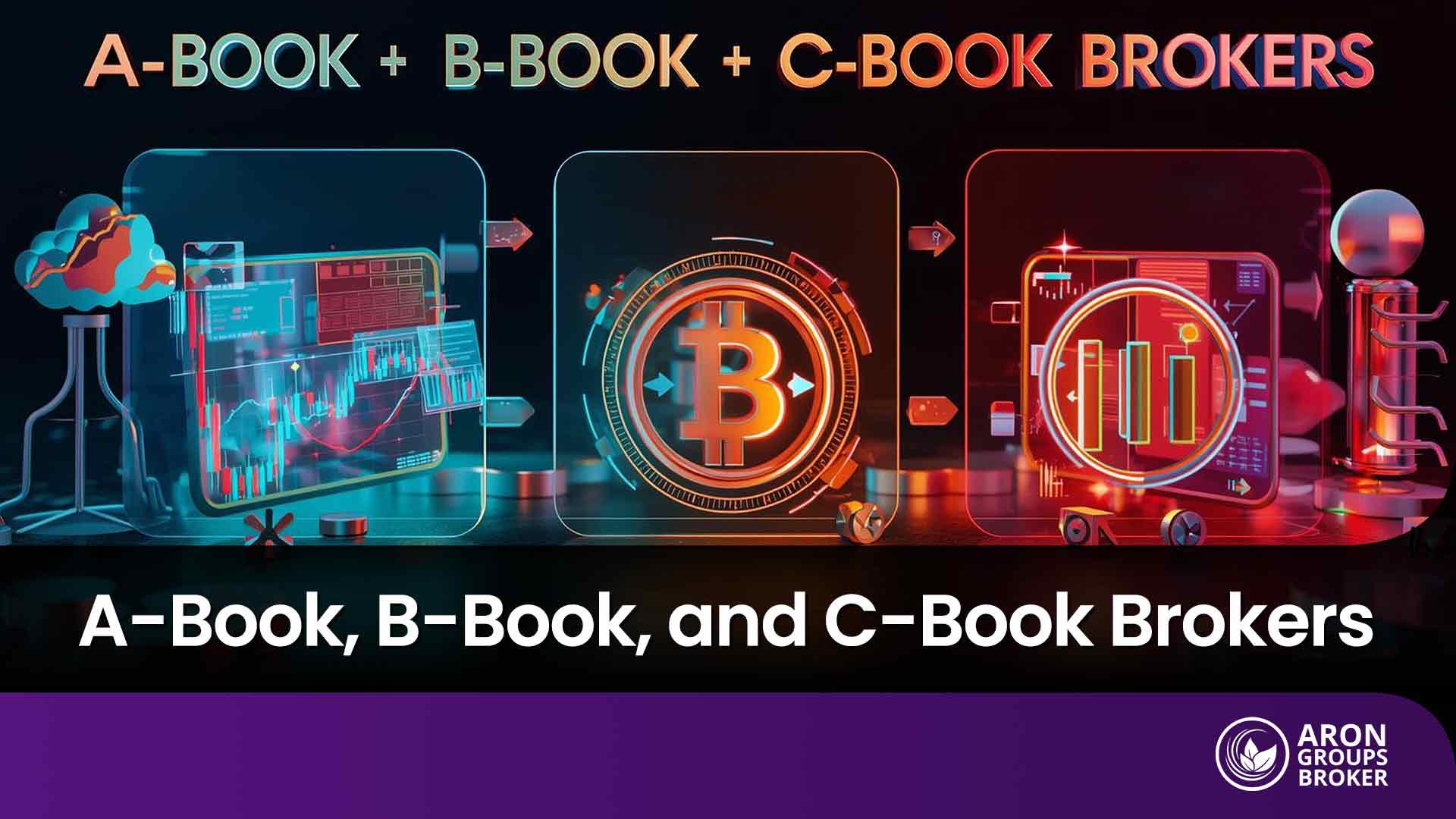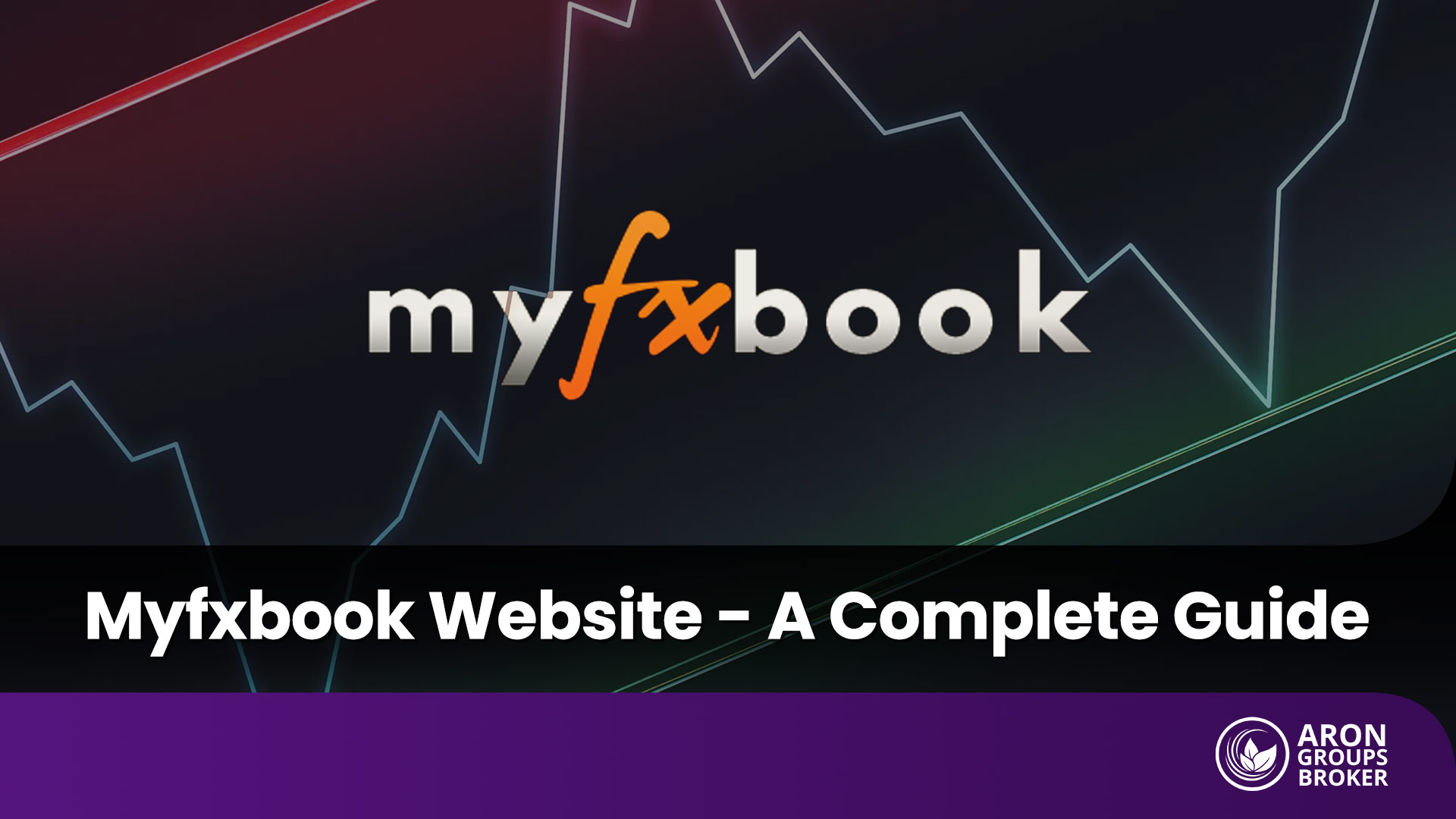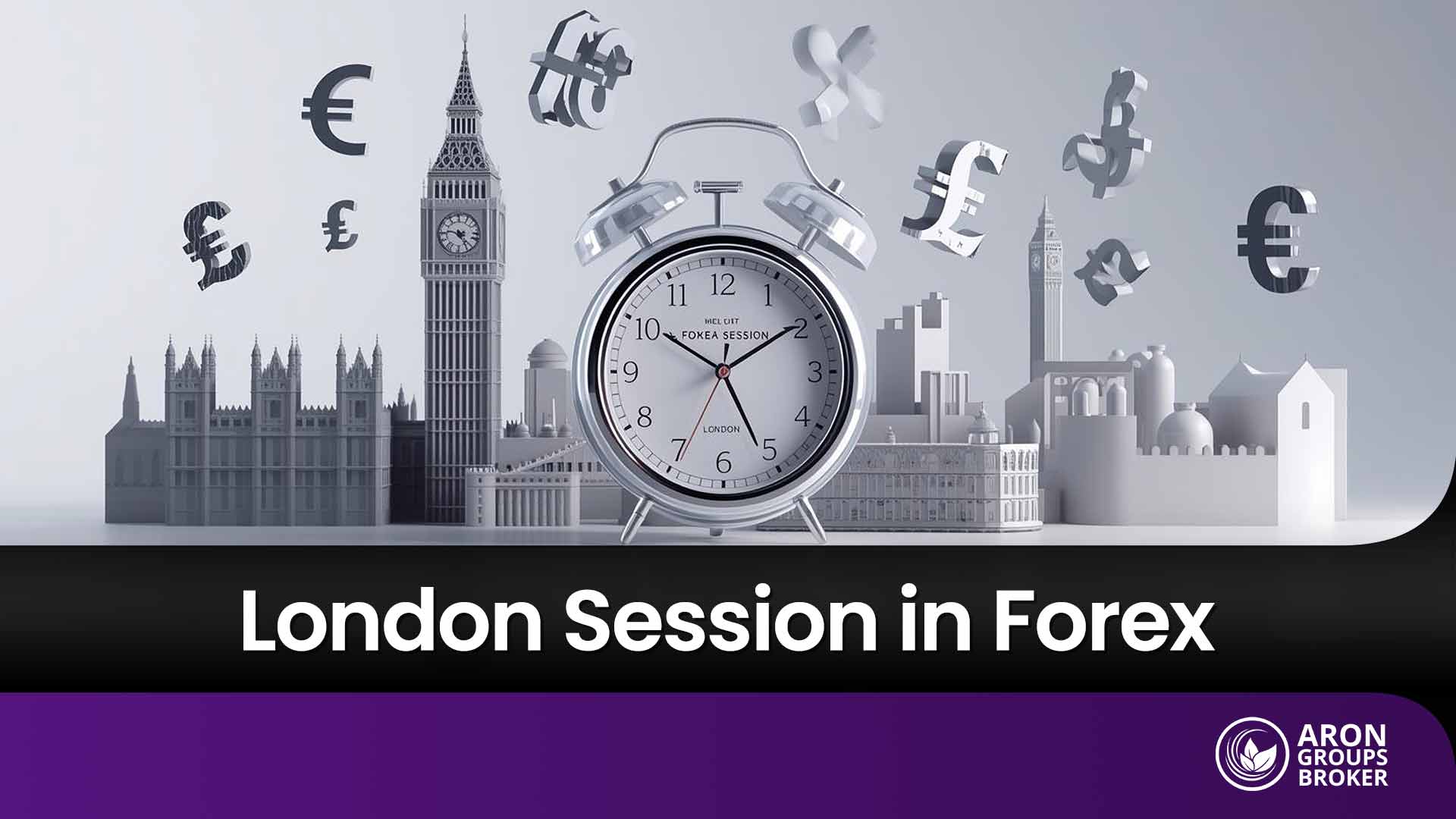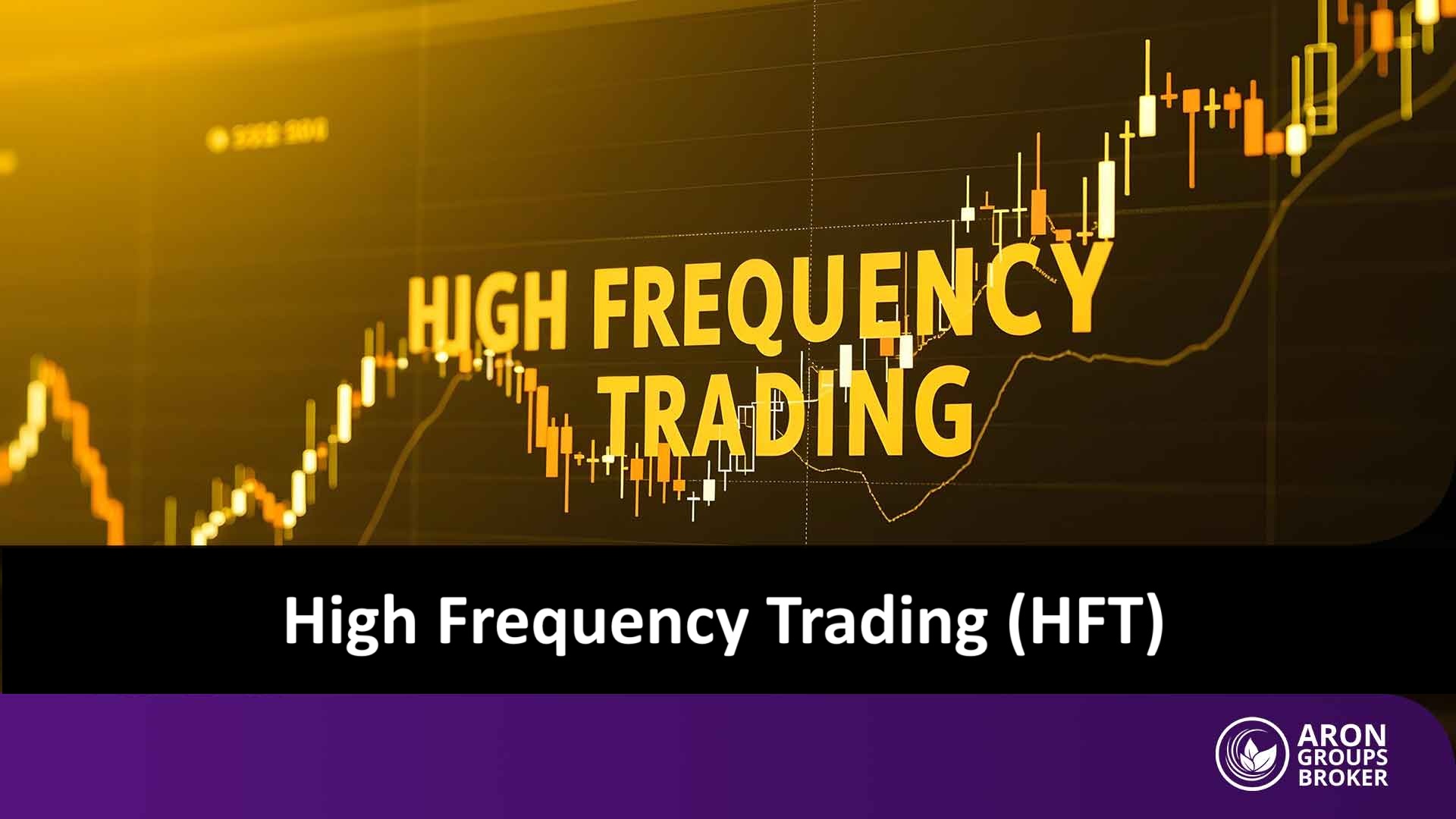At first glance, all brokers may appear similar. One offers higher bonuses, while the other charges lower commissions. However, the broker’s business model is what determines the speed, quality, and cost of your trade execution. The difference between A Book, B Book, and C Book is not just a label. This difference directly affects your spreads, commission slippage, requotes, pricing transparency, and even the potential conflict of interest between the broker and the trader.
In this article from Aron Groups Broker, stay with us as we explain practically how each broker model executes your orders and how choosing the right type of broker can completely change the quality of your trading experience.

- A book broker earns more when traders stay active over time, which naturally encourages fair pricing and consistent execution.
- B Book brokers face significant internal risk because large client profits can directly affect the broker’s balance sheet.
- C Book brokers rely on advanced data analysis to classify traders, but this process can be highly unpredictable and operationally demanding.
- Strong regulation is the single most reliable safeguard for traders because it enforces transparency regardless of the broker’s execution model.
Differences Between A Book B Book and C Book Brokers
To better understand how different types of brokers operate in financial markets, the table below summarizes the key differences between A Book, B Book, and C Book brokers. These differences include the business model, the broker’s revenue model, the level of conflict of interest with traders, transparency, and more.
| Features | A Book Broker | B Book Broker | C Book Broker |
|---|---|---|---|
| Business model | Client orders are routed to the main market to be executed at real market prices. The broker acts as an intermediary. | Orders are managed internally and the broker becomes the counterparty to clients. The broker acts as a market maker. | A combination of both. Orders from professional clients are sent to the interbank market while beginner client orders are handled internally. |
| Broker revenue source | Spread and commission | Spread and client losses | A mix of both depending on client type and order routing |
| Spread | Variable and floating spreads. Low in calm markets and higher in volatile conditions. | Fixed and high spreads | Variable spreads for orders sent to liquidity providers and fixed spreads for internal execution |
| Commission | Fixed commission | No commission | A mix of both depending on client type and order routing |
| Pricing transparency | Real prices with high transparency | Prices slightly different from the main market and low transparency | A complex model with low transparency |
| Conflict of interest | None. The broker benefits from higher trading volume. | Present. Broker profit often comes from client losses. | A mix of both depending on client type and order routing |
| Liquidity and execution | Limited liquidity. Possible delays or slippage if liquidity providers are few. | High liquidity and very fast order execution | A mix of both depending on client type and order routing |
| Educational services | Strong because the broker benefits when clients profit and stay active. | Weak because broker profit comes from client losses. | A mix of both depending on client type and order routing |
| Broker profitability | Low but stable | High because most traders lose money | A mix of both depending on client type and order routing |
| Broker risk level | Very low risk | Very high risk | A mix of both depending on client type and order routing |


According to B2Broker: “A-book brokers route orders to external liquidity providers, acting as intermediaries and earning through spreads or commissions.”
A Book Broker
A book broker, also known as an ECN or STP broker, routes client orders directly to liquidity providers such as banks, major financial institutions, and the interbank market, creating a direct connection between traders and the real market. In this model, the broker acts solely as an intermediary between the client and the market, without interfering with the order. The broker earns revenue from the difference between the bid and ask prices, known as the spread, as well as a commission.
To establish connectivity between traders and liquidity providers, the broker must obtain the required regulatory licenses, reach agreements with liquidity providers, and ultimately provide a trading platform that connects clients and LPs. All of this requires both money and operational effort. Therefore, a book broker charges a commission or fee to cover these costs and generate a profit. For this reason, they are sometimes referred to as commission-based brokers.
How an A Book broker works
When a client’s order is routed to a liquidity provider, the LP or other traders whose orders reach the market become the counterparty and execute the client’s order. As a result, it makes no difference to the broker whether the trader makes a profit or a loss because the broker has already collected its spread and commission.
Since the broker neither gains nor loses from client trades, there is no conflict of interest between the broker and the trader in an A Book model. Some even argue that the more profitable traders become, the better it is for the broker, because higher trading volume and larger position sizes mean higher spreads and commissions. This business model is known for transparency in pricing and fair execution.
Example for better understanding
A Book broker can be compared to online marketplaces such as Amazon or eBay.
Online stores display prices set by various sellers and do not set their own prices. They act as intermediaries connecting buyers with sellers. The store takes no risk because it is not the one selling the goods.
Similarly, in A Book broker, when you place a trade, the broker only routes your order to the interbank market or other liquidity providers. Whether you profit or lose makes no difference to the broker. What matters is the number of trades you generate. The more the better.
This is why A Book brokers benefit when traders make consistent profits and stay active in the market.
Order flow from client to market in an A Book broker
In this model, the broker acts purely as an intermediary and sends your order directly to liquidity providers or the interbank market. The order flow from client to market in an A Book broker works as follows.
- The client places a buy or sell order.
- The order is sent to the broker without modification.
- The broker routes the order directly to liquidity providers such as banks or the interbank market.
- The liquidity provider executes the order.
- The trade result is returned to the client.


According to Takeprofit Tech: “The A-book model provides more transparency for the broker as it directly facilitates the trade.”
B Book Broker
B Book brokers are market-making brokers, also known as dealing desk brokers. As explained in detail in the Market Maker Broker article, B Book brokers, unlike A Book brokers, manage client orders internally and do not send them to the real market. This means that client orders placed with a B Book broker are not visible to any external market or broker. In this model, the broker becomes the client’s counterparty. When the trader sells, the broker buys, and when the trader buys, the broker sells. Since every trade has a winner and a loser, the possibility of a conflict of interest is obvious in this business model.
This does not mean a B Book broker always profits from client losses, because such brokers are also subject to significant losses. This is a risk A Book brokers do not face.
Due to the inherent conflict of interest between B Book brokers and their clients, there is a risk of manipulation. In some cases, brokers have used their access to client order details to manipulate prices and close trades in their own favor. Therefore, traders must choose only reputable, well-regulated, and long-standing B Book brokers.
In the B Book model, spreads are fixed, and brokers usually do not charge commissions, which keeps trading costs relatively low. However, as mentioned, concerns may arise about transparency and fair execution.
Example for better understanding
Imagine you want to buy a certain product, but this time you visit a store that sells goods from its own warehouse. The store can set prices as it sees fit. If you manage to buy the product cheaper, the store loses. If the store sells it to you at a higher price, it earns more while you lose.
Likewise, in B Book brokers, when you open a trade, the broker becomes your counterparty. Clearly, if you profit, the broker loses, and if you lose, the broker profits. This creates an evident conflict of interest between the broker and the trader.
In this model, the broker itself becomes the counterparty to your trade. If you buy, the broker sells; if you sell, the broker buys. The order flow from the client to the broker in this setup works as follows.
- The client places a buy or sell order.
- The order is sent to the broker.
- The broker does not route the order to the real market; instead, it becomes the counterparty.
- The client’s profit or loss is reflected directly in the broker’s account.


If a broker passes the client’s trades to the interbank market, it is an NDD broker, serving as an intermediary and working according to the A-Book model.
C Book Broker or Hybrid Broker
A C Book or hybrid broker is a combination of the two common execution models, A Book and B Book. In this model, the broker decides how to process orders based on the trader’s profile, trading style, trade volume, and profit or loss history.
Below, we explain how a C Book broker processes orders using a practical scenario.
Practical scenario:
Imagine two traders using a hybrid broker.
- X is a beginner who has recently entered the market and has a history of consecutive losses.
- Y is a professional scalper with high trading volume and a strong profit-to-loss ratio.
To reduce its own risk, the hybrid broker executes their orders as follows.
- The broker keeps X’s orders inside the company and executes them on its dealing desk, the B Book model, because X is likely to lose, and the trader’s profit would not harm the broker.
- The broker sends Y’s orders to the interbank market through the A Book model to avoid the risks associated with a highly profitable trader’s legal complaints or direct financial losses.
How hybrid brokers categorize trades based on trader profile
Hybrid brokers use management systems and data analysis tools to categorize traders. These categories are usually based on the following factors.
- Trading history track record. Has the trader been profitable or unprofitable in the past?
- Trade volume. Does the trader trade with large volumes that could expose the broker to risk?
- Strategy type. Does the trader use scalping, news trading, arbitrage, or long-term trading? Long-term trading carries the least risk for the broker.
- Trading behavior. Does the trader use an expert advisor? Does the trader open many trades simultaneously? Does the trader trade during news events?
Although this type of broker benefits from the advantages of both models, it is important to note that executing this business model is extremely complex. The hardest part is categorizing traders, because it is impossible to predict who will profit and who will lose.
To reduce classification errors and avoid large losses, hybrid brokers must develop specialized software that analyzes market conditions, trader deposit levels, leverage usage, trader risk levels, stop losses, and the broker’s internal risk management rules. Based on this analysis, the system assigns each trader to the appropriate execution category.

Practical Guide: How to Identify an A Book Broker from a B Book Broker
Understanding the differences between the A Book and B Book models is crucial for forex traders, as these models interact with clients in very different ways and strongly influence the trading experience. In this section, we provide a practical checklist to help you distinguish between the two.
Checklist for Identifying A Book and B Book Brokers
- Account types
ECN and STP accounts usually indicate an A Book model. These accounts provide direct access to the interbank market, meaning the broker routes your trades directly to the market and does not interfere with execution.
Market makers or B-Book brokers typically offer Standard and Cent accounts because these account types allow the broker to manage client positions internally and serve as the counterparty efficiently.
- Spread type
In the A Book model, spreads are usually variable and depend on market conditions. These variable spreads result from direct access to interbank pricing and market depth.
If a broker offers fixed spreads with no commission, this is often a sign of a B-Book model, where the broker trades internally against clients rather than sending orders to the market.
- Requotes
In the A Book model, requotes are rare due to the direct connection with the market. Prices update quickly, and price delays are minimal.
Frequent requests for multiple requests for a new price can be a sign of a B Book model, where the broker may be manipulating prices internally.

When you send an order such as a buy or sell request to the broker but the quoted price changes at the moment of execution the broker asks you to confirm the new price. This situation is called a requote.
- Restrictions during news events
A Book broker typically does not impose restrictions during major news releases because of their direct connection to the interbank market, and clients can trade even during high-impact events.
Book brokers may impose restrictions during major news events, such as NFP or CPI, including widening spreads, temporarily freezing trading, or blocking new trades. This may indicate that the broker is managing its own risk, since, under the B Book model, the broker is taking the opposite side of your trade.
Below is a table summarizing the main differences between A Book and B Book.
| Feature | A Book Model ECN STP | B Book Model Market Maker |
|---|---|---|
| Account types | ECN and STP accounts with access to the interbank market | Market maker accounts where trades remain inside the broker’s system |
| Spread type | Variable spreads depending on market conditions | Fixed spreads with no commission |
| Requotes | Requotes are rare and prices update quickly | Frequent requotes may occur due to internal price manipulation |
| Restrictions during news events | No restrictions during major news trading is allowed | Restrictions such as spread widening or blocking trade entries during news |
Which Broker Model Is More Suitable for You? A Practical Selection Guide
Choosing the right broker is one of the key steps toward long-term success in financial markets. Each broker model discussed in this article has its own advantages and disadvantages, and depending on your trading style, one of these models may be more suitable for you. Below, we examine the characteristics of each model and identify which type of trader benefits most from each.A Book Broker suitable for professionals and scalpers
Key advantages of A Book brokers include:- Fast execution. A Book is ideal for scalpers because trades are executed quickly with minimal slippage.
- Low spreads. This model is highly suitable for professional traders who require tight spreads because spreads are usually floating and strongly influenced by real market conditions.
- High volume and algorithmic trading. Algorithmic traders and high-volume traders typically prefer A Book brokers for their fast, frictionless execution.
B Book Broker is suitable for beginners and low-risk investors
Key advantages of B Book brokers include:- No commission. Instead of charging a fixed commission, these brokers earn through the spread, which can be attractive for beginners or traders with small capital.
- Low minimum deposit. Book brokers generally have lower minimum deposits, making them a suitable option for new traders with limited funds.
- Good for long-term strategies. Traders using medium- or long-term strategies who do not rely on fast execution and prefer lower trading costs may benefit from this model.
| Feature | A Book Broker | B Book Broker |
|---|---|---|
| Trade execution | Fast and delay free | May involve delays |
| Spread | Low and floating | Higher spreads and may include commission |
| Minimum deposit | Generally high | Generally low |
| Commission | Usually charged | The spread replaces commission |
| Suitable for | Scalpers fast traders algorithmic traders high volume traders | Beginners with small capital long term strategies low risk traders |
The Role of Regulation in Monitoring Broker Models
Regulators and supervisory authorities in financial markets play a vital role in ensuring transparency, credibility, and the security of trading operations. These institutions require brokers to follow specific rules designed to protect clients’ interests and create fair conditions for all traders. These rules include the use of secure technologies, full disclosure of financial information, and adherence to ethical and operational standards when providing services.
This is especially important for B Book brokers, who take the opposite side of the client’s trade. Regulators impose strict oversight to prevent conflicts of interest and protect client rights. Their supervision ensures that brokers use anti-fraud measures and maintain transparency in pricing and trading conditions.
The importance of choosing a regulated broker
Regardless of whether a broker uses the A Book, B Book, or C Book model, choosing a regulated broker is essential for every trader. Regulated brokers operate under the strict supervision of reputable financial authorities and must comply with rules that protect client interests. These regulators ensure that brokers comply with customer protection laws, such as keeping client funds in segregated accounts and providing transparent trading conditions.
Choosing a broker licensed by authorities such as the FCA in the United Kingdom, CySEC in Cyprus, or ASIC in Australia provides traders with confidence that, even in the event of issues, clients will receive legal protection and their rights will be preserved. This reduces concerns about fraud, price manipulation, and conflicts of interest, helping create a safe and reliable trading environment.
Conclusion
A broker’s order execution model directly shapes your trading experience. A Book broker, with its transparency and direct execution, is well-suited for scalpers and professional traders. B Book brokers offer fixed spreads and lower costs but come with a serious conflict of interest. C Book brokers combine elements of both models. What truly matters is choosing a regulated broker that aligns with your trading style because only then can you rely on dependable order execution, controlled trading costs, and peace of mind throughout your long-term trading journey.






























